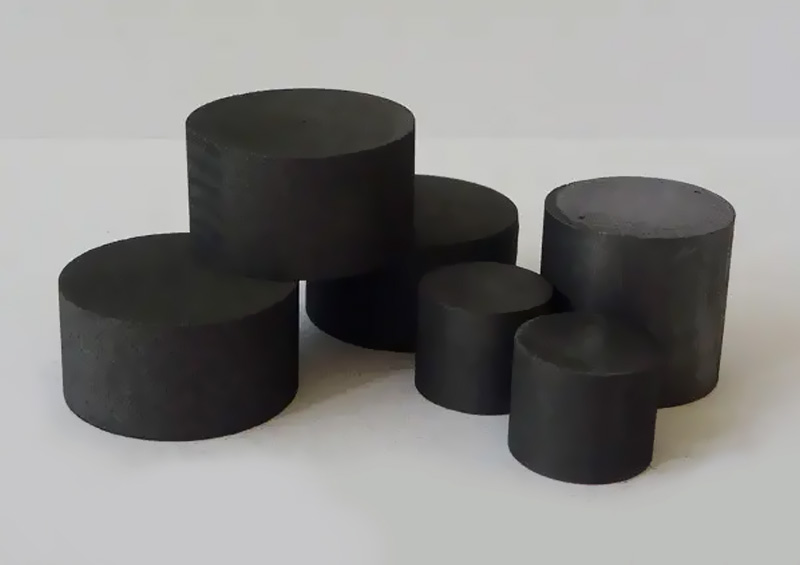
 2022-11-19
2022-11-19
 2023-09-07
2023-09-07(1) Used for electric arc steelmaking furnaces. Electric furnace steelmaking is a major user of graphite electrodes. Electric furnace steelmaking uses graphite electrodes to introduce current into the furnace,Utilize the high-temperature heat source generated by the arc between the electrode end and the furnace material for smelting.(2) Used for submerged arc furnaces. The submerged arc furnace is mainly used for the production of industrial silicon and yellow phosphorus, and its characteristic is that the lower part of the conductive electrode is buried in the furnace material,Arc is formed within the material layer and the heat energy emitted by the resistance of the furnace material is used to heat the furnace material. A submerged arc furnace with a high current density is requiredGraphite electrodes are required.(3) Used for resistance furnaces. The graphitization furnace for producing graphite products, the furnace for melting glass, and the electric furnace for producing silico
 2023-09-06
2023-09-06(1) Long production cycle(2) High energy consumption(3) Multiple production processes(4) A certain amount of dust and harmful gases are generated during the production process, and it is necessary to take comprehensive ventilation and dust reduction measures as well as environmental protection measures to eliminate harmful gases.(5) The carbon raw materials required for production, such as petroleum coke and coal tar pitch, are by-products of production and processing in oil refining and coal chemical enterprises.
 2023-09-06
2023-09-06Graphite electrodes are made of petroleum coke and asphalt coke as aggregates, coal tar pitch as binder, and undergo raw material calcination, crushing and grinding, batching, kneading, forming, roasting, impregnationA high-temperature resistant graphite conductive material made by graphitization and mechanical processing, called artificial graphite electrode (referred to as graphite electrode), to distinguish it from using natural graphiteA natural graphite electrode prepared from raw materials.Graphite electrodes are mainly used as conductive electrode materials for arc steelmaking furnaces.
 2023-09-05
2023-09-05Graphitization is a high-temperature heat treatment process in which the roasted product is placed in a high-temperature furnace and heated to a temperature above 2300-2500 ℃ in a protective medium, transforming the hexagonal carbon atom plane grid from a two-dimensional disordered arrangement to a three-dimensional ordered graphite structure.Its purpose and function are:1. Improve the thermal and conductive properties of materials;2. Improve the thermal stability, thermal shock resistance, and chemical stability of materials;3. Improve the lubrication and wear resistance of materials;4. Remove impurities from the material and improve purity;5. Reduce the hardness of the material to facilitate mechanical processing.
 2023-09-05
2023-09-05Ordinary power electric furnaces are equipped with ordinary power graphite electrodes, high-power electric furnaces are equipped with high-power graphite electrodes, and ultra-high power electric furnaces are equipped with ultra-high power graphite electrodes.For AC steelmaking arc furnaces,The 10-30t electric furnace is equipped with graphite electrodes with a diameter of 300-400mm,30-50t electric furnace equipped with 450mm diameter graphite electrode,60-80t electric furnace equipped with 500mm diameter graphite electrode,100-170t electric furnace is equipped with graphite electrodes with a diameter of 550-600mm,The 200t electric furnace is equipped with graphite electrodes with a diameter of 600-700mm,250-300t electric furnace is equipped with 700mm diameter graphite electrodes.For DC steelmaking arc furnaces,30t electric furnace equipped with 450mm diameter graphite electrode,A 60t electric furnace is equipped with a 500mm diameter graphite electrode,70-80t electric furnace equipp
 2023-09-05
2023-09-05There are various forming methods for carbon production, including four main methods: compression molding, extrusion molding, vibration molding, and isostatic pressing molding.Molding methodThis method uses a vertical press to make a mold according to the shape and size of the product. Then, a certain amount of mixed paste or powder is loaded into the mold on the press workbench. The press is started to apply pressure to the paste or powder, and maintained for a certain time to form it. Then, the pressed blank is ejected from the mold.The molding method can be divided into unidirectional pressing and bidirectional pressing, hot pressing and cold pressing according to different processes and equipment conditions. The molding method is suitable for pressing products with small size differences in three directions, uniform density, and high structural density and strength, but the products have anisotropy. Mainly used for producing electric carbon products and special graphite products.E